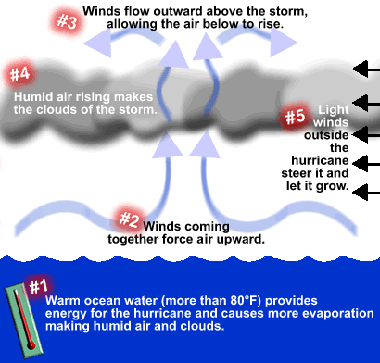Five things that a hurricane needs
Click on image for full size
Lisa Gardiner/Windows to the Universe
How Hurricanes Form
A tropical thunderstorm can grow into a massive hurricane under certain conditions. Sometimes several thunderstorms start rotating around a central area of low pressure. This is called a tropical depression. If the depression strengthens so that winds reach at least 39 mph, it is called a tropical storm. And if wind speeds increase to more than 74 mph, it is called a tropical cyclone or hurricane.
Once formed, hurricanes take energy from the warm ocean water to become stronger. A storm will strengthen if there is a supply of warm, moist air to feed it. Warm, moist air is found above warm, tropical ocean waters. While a hurricane is over warm water it will continue to grow. A hurricane dies when it moves away from the tropics. When a hurricane moves into areas with cooler ocean water, it weakens. It will also weaken if it travels over land.
The rotation of the storm is due to the Coriolis Effect, a product of the Earth's rotation. This causes the air being drawn into the central low pressure to curve. The air rises as it rotates. This rising air, which is saturated with water, cools and condenses, forming clouds. Hurricanes do not occur within 300 miles (500 kilometers) of the equator because there is no Coriolis Effect at the equator.
You might also be interested in:

How did life evolve on Earth? The answer to this question can help us understand our past and prepare for our future. Although evolution provides credible and reliable answers, polls show that many people turn away from science, seeking other explanations with which they are more comfortable.
...more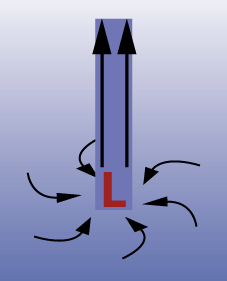
You may have seen a weather map with a red L on it. This red L means there is a low pressure system over that area of the map. Just what does that mean? There are no exact measurements that would make
...more
Earth's ocean covers more than 70% of our planet's surface. There are five major ocean basins. The Pacific Ocean is the largest. It’s so large that it covers a third of the Earth's surface. The Atlantic
...more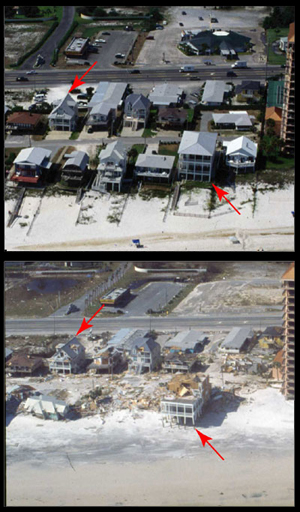
Rain, wind, tornadoes, and storm surge related to hurricanes cause change to natural environments, damage to the human-built environment, and even loss of life. When a hurricane is over the ocean and far
...more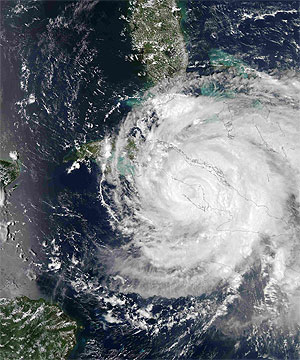
The Gulf of Mexico and Caribbean Sea are often in the path of hurricanes. These violent storms are hazards for people living near the coast in this region because of the wind, the waves, and especially
...more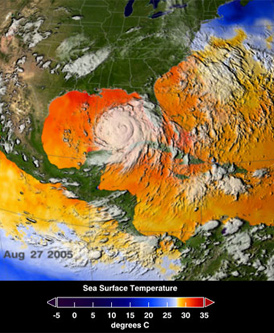
Hurricanes can be the deadliest, strongest, and costliest storms in the world and they have been more severe than usual in recent years, causing an amazing amount of damage to coastal towns and cities.
...more
The hurricane season in the North Atlantic is particularly strong this year. And scientists predict that the storms will be getting stronger because of global warming. Follow the links below to find out
...more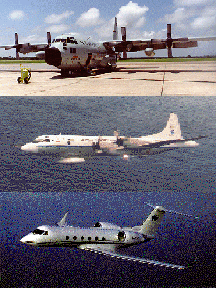
Why do the 53rd Weather Reconnaissance Squadron and the Hurricane Research Division use different airplanes? Actually, they only use two main types. The top two airplanes in the graphic, the WC-130H Hercules
...more


